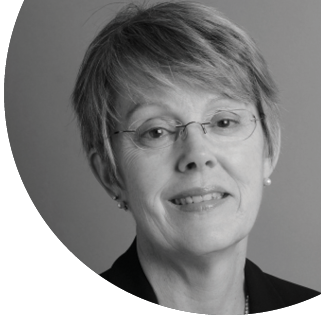DEPARTMENTS

PRESIDENT'S MESSAGE
The Communities of Industrial Hygiene
BY DEBORAH IMEL NELSON, AIHA® PRESIDENT
On a recent trip back to Oklahoma, I went to the annual Greek festival in Tulsa. My first reaction to the music, food, costumes, and dancing was envy: these people had such a strong sense of shared community! But then I realized that I, too, have a very strong community in the colleagues and friends I’ve met over the years through membership in national AIHA and local sections in Oklahoma and Colorado. This got me thinking about the community we share with each other, and our relationships to the larger communities where we live, work, study, and play.
PROFESSIONAL COMMUNITIES
Within the IH community, our fellowship is based on common interests and goals, and is nurtured by our work together on committees and boards, and our attendance at classes and conferences. This doesn’t mean that we always agree; we do enjoy spirited debates on technical issues, association governance, and even politics. But we all share a common goal of protecting worker health and safety, and eliminating workplace injuries and illnesses.
Community is enhanced by communication. AIHA will soon launch
Catalyst
, an online community that will facilitate networking and allow members to easily collaborate online. Local Sections, Volunteer Groups, and Working Groups will have the resources and organization needed to effectively work together. Groups may also form around topical areas and shared interests, organically creating knowledge communities.
REDEFINING OUR COMMUNITY OF PRACTICE
IH and OEHS professionals have long been active in their wider communities, as indicated by the classic definition of industrial hygiene, which refers to “environmental factors or stresses arising in or from the workplace, which may cause sickness, impaired health and well-being, or significant discomfort among workers or among the citizens of the community.” With the advent of OSHA, many of us focused our careers more narrowly on workplace health and safety issues. However, as we’ve seen over the past few decades, the nature of IH/OEHS employment has evolved. Approximately one-fourth of our members are now consultants. IH professionals who are responsible for occupational health within an organization may also manage safety and environmental compliance. Emergency preparation and disaster response, and other community-based issues such as air quality and health and safety in schools, engage even more of us outside the traditional workplace.
The nature of work itself is undergoing significant shifts. Who’s an employee and who’s a subcontractor?
DEBORAH IMEL NELSON, PhD, CIH,
is president of AIHA. She can be reached at (720) 587-7500 or via email
.The nature of work itself is undergoing significant shifts. Who’s an employee and who’s a subcontractor? How is the workplace defined: a designated address, a home office, or an unseen location on another continent? When does the workday start and stop? Does it spill over into the evenings, weekends, and holidays? Are our significant exposures to chemical, biological, physical, and emotional stresses occurring in the workplace, or in the community (think Total Worker Health)? Adoption of work/life balance and wellness programs have further expanded our roles beyond traditional health and safety in the workplace. (By the time you read these words, the AIHA Fellows will have already discussed and debated the topic “Specialist vs. Generalist” at the Fall Conference in Tampa.) How do all these shifts in the nature of work and workers affect the way we as industrial hygienists do our jobs?
IH AND COMMUNITY HEALTH
These questions of where we work, what we do, and what we call ourselves will have a significant impact not only to each of us as individuals, but also to our association and our profession. AIHA’s Strategic Planning Task Force has begun its work to update our strategic plan. As we develop our goals and metrics for the foreseeable future, one of the questions we’ll be asking is whether it’s strategic to expand our current tagline from “Protecting Worker Health” to include community health in our scope.
We want to hear from you—your thoughts and opinions matter. Please
email me
to let me know what you think.
